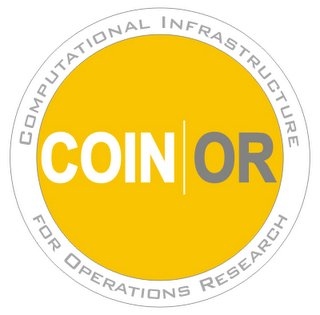The EURO conference in Prague has begun. I really like Prague: it is a beautiful city with great bars, restaurants, museums, and even an OK english-language bookstore or two.
The first order of business here is the opening session (somewhat after the truly first, 8AM technical talks). Awarded at the opening session is the EURO Gold Medal, bestowed as follows:
The EURO Gold Medal is the highest distinction within OR in Europe. It is conferred on a prominent person or institution, for an outstanding contribution to the Operational Research science. The award is officially bestowed in conjunction with a EURO Conference, if there is a suitable candidate.
One advantage of having a conference at a university (along with such disadvantages as funny room layout, confusing directions and an air of “this isn’t what we normally do”: I will say the organizers have done a great job in making things as easy as possible with transit passes, lots of student helpers and so on) is available wireless. So I am in the auditorium, ready to announce the EURO Gold Medal first on the blogosphere.
And the laureate is Aharon Ben-Tal of the Technion, Israel. He works in continuous optimization, so I am not particularly well versed in his work. This is from his web page:
Prof. Ben-Tal’s research work is mainly in the area of nonlinear optimization. His theoretical work is concerned with extremum principles for problems in a general setting, with regard to the underlying decision space, and the underlying smoothness of the functionals. He was among the first to develop a comprehensive theory of second-order optimality conditions for nondifferential problems.
Prof. Ben-Tal is also involved in research in stochastic mathematical programming. He introduced the concept of entropic-penalty for problems with randomness in the constraints, and developed a duality theory which established a link between stochastic programming and the Expected Utility principle in economics. Recently he developed, together with Prof. A. Nemirovski, the Robust Optimization methodology. The focus of Prof. Ben-Tal’s work in recent years is in computational methods for solving large-scale continuous optimization problems. The algorithms he develops are used in designing optimally complex engineering structures, water distribution networks, and techniques for medical image reconstruction. The above projects are carried out in the MINERVA Optimization Center, a 2 million DM endowed research center.
Prof. Ben-Tal was a member of the International Council of the Mathematical Programming Society. He served as Area Editor of the journal Mathematics of Operations Research, and is currently a member of the Editorial Board of the journals Convex Analysis and SIAM Optimization. He received Awards of Excellence from the Technion both for research and for teaching.
The work with the most impact is the work he did with Nemirovski in creating the area of robust optimization.

 I leave tomorrow for Iceland for the
I leave tomorrow for Iceland for the 